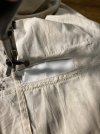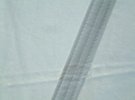floydvoid
LOVES Wooden Canoes
Hello, it’s getting warmer and the wind is blowing.
At last years assembly I bought a leg o mutton sail with narrow panels and straight stitching. I have to patch a few holes but I am forgetting the techniques I researched the last time I patched a sail.
What’s the best way to patch small holes in a cotton sail? Darn them like a sock?
I patched a larger hole- I double hemmed the cotton bed sheet patch and hemmed two sides of the hole, then stitched perimeter of the patch and then perimeter of the hole.
I think I’ll single hem the next patch and just see around the perimeter of the hole to keep it from pulling at fibers.
Am I following the right plan?
-Ryan
At last years assembly I bought a leg o mutton sail with narrow panels and straight stitching. I have to patch a few holes but I am forgetting the techniques I researched the last time I patched a sail.
What’s the best way to patch small holes in a cotton sail? Darn them like a sock?
I patched a larger hole- I double hemmed the cotton bed sheet patch and hemmed two sides of the hole, then stitched perimeter of the patch and then perimeter of the hole.
I think I’ll single hem the next patch and just see around the perimeter of the hole to keep it from pulling at fibers.
Am I following the right plan?
-Ryan




